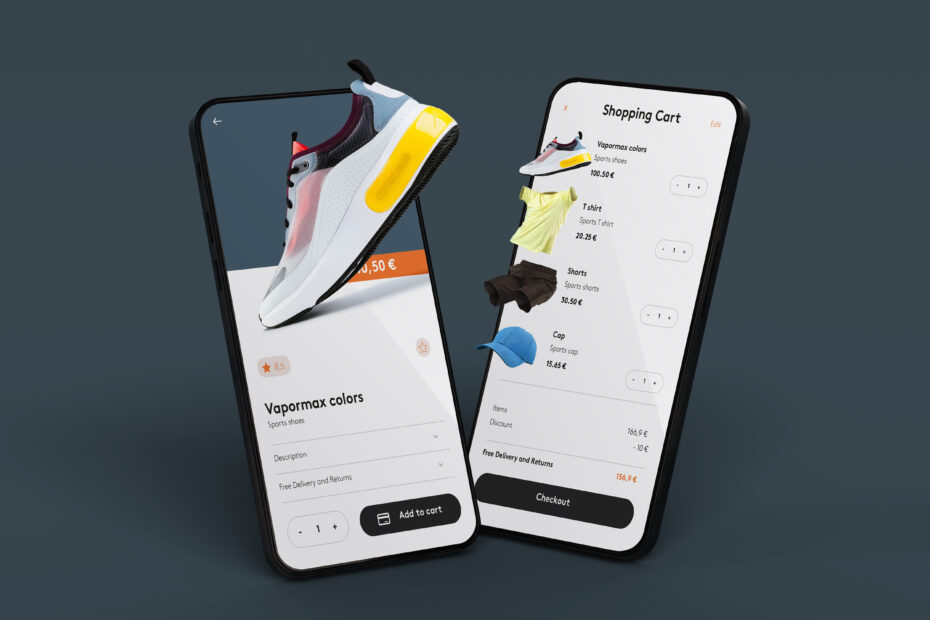Leveraging social media platforms is essential for driving traffic to your Shopify store in 2024. While traditional advertising still has its place, authentic engagement with your audience on channels like TikTok and Instagram can yield impressive results. Short, entertaining video content that showcases your products not only captivates viewers but also encourages user-generated content through challenges and trends, creating a ripple effect of organic reach. Collaborate with micro-influencers who resonate with your brand’s values; their niche followings can lead to highly engaged customers.
Additionally, consider the power of immersive technologies like augmented reality (AR). By incorporating AR experiences into your online shopping journey, you provide customers an innovative way to visualize how products fit into their lives before making a purchase. This remarkable approach lowers return rates while simultaneously increasing customer satisfaction. Finally, don’t underestimate the importance of an optimized email marketing strategy tailored for segmentation; targeted campaigns based on shopping behaviors will nurture leads effectively and drive consistent traffic back to your store.
1. Introduction: Importance of Traffic in E-Commerce
As consumers increasingly seek engaging and interactive shopping experiences, augmented reality (AR) stands out as a revolutionary tool for online retailers. By integrating AR into your Shopify store, you offer customers the ability to visualize products in their own environment before making a purchase decision. Imagine a customer being able to see how a piece of furniture would fit in their living room or trying on apparel virtually; this level of personalization can significantly reduce return rates and enhance customer satisfaction.
Moreover, the use of AR can transform how brands tell their stories. Through immersive 3D models or curated virtual showrooms, businesses can create compelling narratives around their products that resonate deeply with consumers. This not only captures attention but also fosters emotional connections—essentially turning passive shoppers into active participants in your brand story and amplifying word-of-mouth marketing potential. As AR technology continues to evolve and become more accessible, embracing it could position your Shopify store as an industry leader while driving both engagement and loyalty.
2. Leverage Social Media Marketing Efforts
Moreover, the use of augmented reality (AR) can transform how brands tell their stories by offering immersive experiences that engage customers on a deeper level. Imagine a potential buyer stepping into a virtual showroom, where they can explore lifelike 3D models of products as if they were right there in front of them. This interactive experience allows brands to convey not just the functionality of their items but also the emotions and lifestyle associated with them, creating a compelling narrative that resonates with consumers.
By integrating AR into your Shopify store, you open the door to innovative storytelling techniques that traditional media simply can’t match. Customers can visualize products in their own spaces through mobile devices or smart glasses—everything from furniture to fashion transforms into personal consultations rather than transactional interactions. This personalization fosters connection and loyalty; shoppers are more likely to remember and return to brands that made them feel involved in their purchasing journey. Additionally, sharing these unique AR experiences across social platforms not only enhances visibility but also cultivates community engagement and word-of-mouth marketing, driving even more traffic back to your store.
3. Optimize for Search Engine Visibility
Integrating Augmented Reality (AR) into your Shopify store transforms the way customers experience products, moving beyond static images and conventional media. Imagine potential buyers being able to visualize furniture in their living room before purchasing or trying on clothes virtually from the comfort of their homes. This not only enhances their shopping journey but also builds emotional connections as they imagine how these items fit into their lives. AR storytelling allows brands to weave narratives around their products, highlighting unique features and history in immersive ways that captivate consumer interest.

Moreover, AR can catalyze user-generated content, encouraging shoppers to share their experiences on social media platforms. When customers showcase how they use your product in augmented reality, it extends your brand’s reach organically while creating an engaging community around your offerings. This interactive loop not only drives traffic back to your Shopify store but also fosters a sense of belonging among users who help tell the story together—a powerful endorsement far beyond traditional advertising methods. With such innovative approaches at hand, embracing AR might just be the game-changer you need for 2024’s competitive landscape.
4. Utilize Email Marketing Campaigns Effectively
Moreover, AR can catalyze user-generated content, transforming ordinary shoppers into brand ambassadors. When customers showcase their experiences through augmented reality—be it trying on a digital outfit or visualizing how a piece of furniture fits in their home—they create authentic moments that resonate deeply with their followers. This social sharing not only amplifies brand visibility but also cultivates a sense of community around your products. The ability to visualize items in real-time adds an engaging layer to the shopping experience, prompting users to capture and share these unique interactions.
Furthermore, AR experiences serve as compelling conversation starters that can enhance social media engagement. Shoppers are more likely to tag brands when they tag themselves engaging with an interactive feature, leading to organic reach and increased traffic back to your Shopify store. By encouraging this kind of immersive interaction, you tap into the power of peer influence—where customer endorsements feel trusted and relatable compared to traditional advertising. As such, integrating AR can significantly boost not only user satisfaction but also foster lasting connections between your brand and its audience.
5. Invest in Pay-Per-Click Advertising
AR experiences not only enrich the shopping journey but also elevate social media engagement in unprecedented ways. When customers interact with augmented reality features, they naturally feel compelled to share their unique experiences on platforms like Instagram, TikTok, and Facebook. Imagine a shopper trying on virtual clothes or visualizing furniture in their living room; these moments provide visually striking content that’s perfect for sharing. This kind of immersive storytelling encourages users to tag your brand in their posts, creating organic buzz that can amplify your reach.
Moreover, AR transforms the ordinary act of shopping into an event worth celebrating—prompting discussions among friends and followers online. Brands that integrate AR into their marketing strategies often create a sense of community around shared experiences. As users post and engage with this captivating content, it fosters word-of-mouth referrals that are invaluable in driving traffic to your Shopify store. Ultimately, enhancing social media engagement through AR doesn’t just showcase products; it cultivates a vibrant conversation that positions your brand as an innovator in a competitive marketplace.
6. Collaborate with Influencers and Bloggers
The advent of augmented reality (AR) is revolutionizing the shopping experience, turning mundane errands into memorable events that inspire social interaction. When a customer can try on virtual outfits from the comfort of their home or visualize how a piece of furniture fits in their living room with just a swipe, it becomes more than mere consumption; it’s an experience to share. Customers are now eager to showcase these interactive moments online, prompting discussions and stimulating interest among their followers—transforming individual purchasing decisions into community events.
Brands harnessing AR not only enhance product engagement but also build deeper customer relationships by encouraging sharing among peers. The ability to create personalized experiences invites customers to involve friends in virtual shopping parties, creating lasting memories and organic brand promotion through word-of-mouth shared online. This transformative approach turns shopping into an occasion worthy of celebration, increasing brand visibility across social platforms while driving traffic directly back to Shopify stores for more participants eager to join the fun. Touchpoints like these remind retailers that offering more than products—delivering an immersive experience—is essential in today’s competitive landscape.
7. Create Engaging Content for Your Audience
Brands leveraging augmented reality (AR) are not only transforming product engagement but also fostering genuine connections with their customers. By allowing users to visualize products in their own environments, AR creates a sense of ownership and personal relevance that traditional marketing methods simply cannot achieve. This immersive experience encourages customers to share their interactions on social media, effectively turning them into brand ambassadors. As shoppers showcase how a product fits into their lives—whether it’s visualizing furniture in their living room or trying on virtual accessories—this organic sharing amplifies brand reach and enhances credibility.
Moreover, the interactive nature of AR fosters deeper relationships by inviting consumers to participate in co-creation experiences. Brands can encourage users to customize products in real time, resulting in unique and personalized items that resonate more strongly than one-size-fits-all alternatives. By creating communities around these shared experiences—through hashtags for users to connect over or challenges that bring them together—brands not only drive traffic but build loyalty and emotional investments amongst consumers. As 2024 unfolds, embracing this technological innovation could become essential for brands aiming to stand out amid the noise of digital marketing saturation.
8. Offer Promotions and Discounts Strategically
Moreover, the interactive nature of augmented reality (AR) fosters deeper relationships by inviting consumers to participate in co-creation experiences. By allowing customers to customize products or visualize how items would fit into their lives, brands turn passive shoppers into active participants. Think about it: in a world overflowing with options, giving consumers the tools to influence design and functionality can create a powerful sense of ownership that transcends traditional retail interactions.
For instance, imagine a furniture brand offering an AR app that lets users place virtual couches in their living rooms before making a purchase. This not only elevates the shopping experience but also invites user feedback that brands can leverage for future product development. When consumers feel heard and valued through these shared experiences, they are more likely to develop loyalty and advocate for the brand within their circles—a win-win for businesses looking to increase organic traffic and engagement on Shopify stores as 2024 unfolds.
Conclusion: Implementing Strategies for Success
Integrating augmented reality (AR) technology into the shopping experience is revolutionizing how consumers interact with products, especially in the furniture sector. By leveraging an AR app that allows users to virtually place couches in their living rooms, brands can bridge the gap between online and offline shopping experiences. This innovative approach not only enhances customer engagement but also significantly reduces return rates, as buyers can visualize their selections within their actual space before making a commitment.
Moreover, this immersive experience encourages social sharing; satisfied customers may post images of their newly-decorated spaces on social media platforms, creating organic buzz around your brand. To amplify this effect, consider incorporating features that allow users to share these visualizations directly from the app or offer incentives for those who do. As more consumers seek convenience and personalization in their shopping journey, embracing AR could position your Shopify store at the forefront of retail innovation and traffic generation in 2024.
Read more:
How to Host a Successful Live Shopping Event for Your Shopify Store










